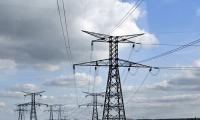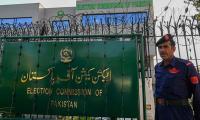The seed that Zulfikar Ali Bhutto planted in Lahore at the residence of late Dr Mubashir Hasan in the late sixties in the form of the Pakistan People’s Party has now become a tenacious tree, but many of its branches have either withered away or their leaves fallen off.
The PPP, founded during the heydays of mass political movements against the Ayub dictatorship, has always been known for its pro-people stance. But the party is currently going through some tough times. This is the party that was once led by the fine orator Zulfikar Ali Bhutto, whose fiery and people-friendly rhetoric made him a popular leader of his times to an extent that people would come from far-off areas just to see the charisma of their leader. However, times have changed since then. The party neither has indomitable leadership nor such compliant followers.
The party that was once hailed as the symbol of the federation has been in government in the province of Sindh for a third consecutive term, but its influence and status has shrunk considerably from a national party to a provincial one. Even within Sindh, its political clout seems to be gradually weaning off as it has nominal representation in city centers like Karachi and Hyderabad.
During the PPP’s last federal government poor governance, a hostile media and judiciary, and its inability to contain the increasing power loadshedding tarnished the party’s image beyond repair. Bilawal Bhutto Zardari, who was made chairman of the party after the assassination of his mother Benazir Bhutto in 2007, has so far not been able to revive the party or leave much of an imprint on national politics.
The baggage that has fallen on the shoulders of Bilawal Bhutto Zardari is not of his making but the result of the poor PPP coalition government following the 2008 elections. Despite the media and judiciary’s aggressive attitude towards the government at the time, it did have some opportunities such as reduction in loadshedding but it did not show any significant performance and was routed out in the 2013 elections and since then has remained confined to Sindh. That was not the first time the PPP had suffered a setback in elections. In 1997, the PPP won just 17 National Assembly seats; it bounced back in the 2002 elections and emerged as the second largest party in the NA.
The party was unable to form the government in the centre from 1977 to 1988 and 1997 to 2008, but this came to pass owing to long dictatorial tenures in Pakistan. This time, however, things are different. Since its 2008 electoral victory, the PPP has only lost its rapport with the people, especially beyond Sindh. On the one hand, this is unfortunate for the party, and on the other it also presents some potential and opportunity for the young leader Bilawal Bhutto Zardari. Bilawal must and perhaps he does realize that the PPP’s gateway to Islamabad passes through Sindh.
The young yet politically mature leader of the PPP must change perceptions about the governance in the province. Although the PPP’s Sindh government has some excellent projects to its credit in the province, they have failed to improve its tarnished image. The youth in Sindh, who are vibrant and active on social media, especially Twitter, and have run many trends on governance and provincial rights issues, are dissatisfied with the performance of the provincial government and continuously vent anger by tweeting and posting disparaging memes.
The deteriorating law and order situation, improper primary health facilities, failure to provide quality education, increasing corruption in education boards, broken roads in the rural areas, non-provision of sanitation and clean drinking water facilities and sidelining of merit are but some issues which need the attention of the PPP chairman. He also needs to interact more with his party workers and the common youth to listen to their grievances and try to resolve them.
The rage of the people of Sindh, particularly the youth, has been witnessed during a few recent protests. There have been protests against the excesses of the property mafia against indigenous peoples; the murder of Dodo Bhel; and about Kandhkot when the convoy of the CM Sindh was stopped and was allowed only after assurances were given to solve their problems.
Bilawal has two years to deliver. If he is serious about improving his party’s fate then he must concentrate on improving the affairs of the Sindh government, otherwise Sindh may just slip out of his hands in the next elections. The young people of Sindh are full of anger and may retaliate by keeping the PPP out of power – because this time they are a little bit more organised and equipped with smartphones and social media tools. The PPP must deliver in Sindh for its own survival.
The writer is a freelance contributor.
As usual, any such deal, aiming to resuscitate ailing economy, brings to fore urge and resolve to halt further...
A representational showing sticky notes on a board. — Unsplash/FileThere are some common themes from the lives...
Whether the Daanish Schools effort has been able to live up to its principles or not may be debatable
According to the federal government, last year 653,100 people experienced homelessness on a single night in America
Another advantage for Pakistan is the enhanced teledensity and internet penetration
Both media spheres need to dovetail in amplifying the urgency of addressing climate change at the local, national, and...







